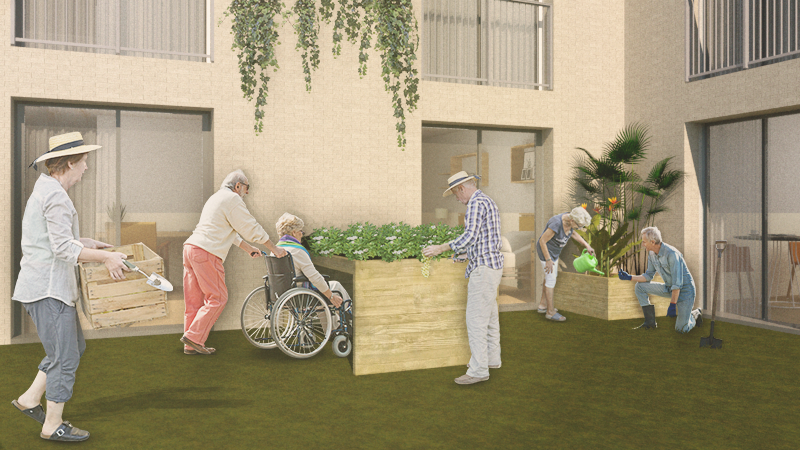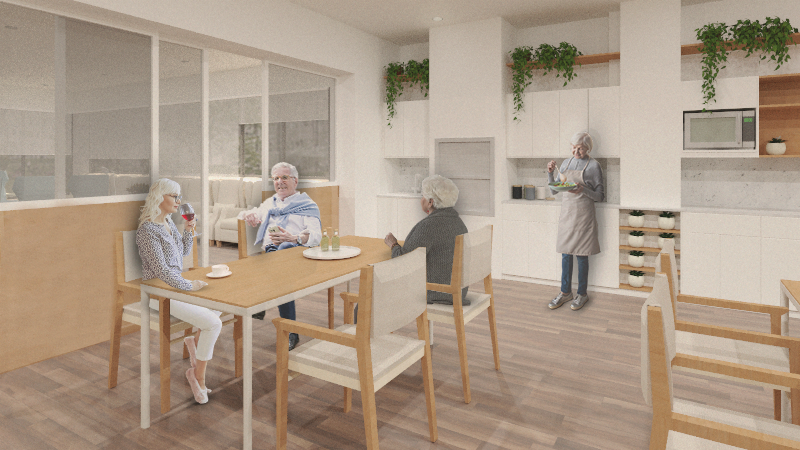Today, October 1st, we celebrate the International Day of Older Persons. It is a day to recognize their contribution to society and to reflect on how we can ensure that they live in safety, comfort and dignity. One of the key factors in achieving this is the spaces where they coexist every day: residences, day centres and adapted homes.
Physical environments are not only scenarios where life takes place, but also directly influence the health, emotional well-being and social relationships of older people.
Why are spaces so important for the elderly?
When we think about the quality of life of the elderly, we often look at medical care, activities or food. But physical space is an equally fundamental element:
-
Safety: prevent falls with non-slip flooring, wide corridors and support railings.
-
Accessibility: adapted furniture, inclusive bathrooms and elimination of architectural barriers.
-
Comfort: good natural lighting, adequate ventilation and warm materials that provide well-being.
-
Coexistence: spaces that encourage social interaction and reduce isolation.
In short, a cared for environment allows the elderly to maintain their autonomy and enjoy a better quality of life.

Key spaces in residences and day centres
To achieve a full coexistence, it is necessary to design different areas with specific functions that respond to physical and emotional needs:
-
Common areas: dining rooms, living rooms and multipurpose spaces that encourage socialization and shared activities.
-
Private rooms: intimate and safe spaces that guarantee privacy and rest.
-
Outdoor spaces: gardens, terraces and patios that promote contact with nature and movement.
-
Care and service areas: doctors’ consultations, nursing or rehabilitation spaces adapted with ergonomics and functionality.
A good balance between private and collective spaces is essential to promote coexistence and reduce the feeling of isolation. A good example of this approach can be found in the adaptation and equipment we made in the Sant Rafael Residence, where the reform of the common spaces significantly improved the quality of life of the residents.
Trends in the design of spaces for the elderly
In recent years, residences and day centres have evolved towards a more humane and personalised model. Some prominent trends are:
-
Person-centered design: spaces designed to respond to real needs, beyond aesthetics.
-
Domestic environments: create environments that are reminiscent of home and not an institutional space.
-
Inclusive technology: sensors, automatic lights or warning systems that increase safety.
-
Sustainability: healthy and durable materials that also contribute to the well-being of the planet.
At Efebé we have already talked about how sustainability is key in the design of spaces, especially in educational environments, but this trend is equally relevant in residences and day centers.

Collective commitment
On the International Day of Older Persons, it is important to remember that caring for this group goes beyond medical or social care. The spaces where they live and coexist play a fundamental role in their dignity and well-being.
Every decision in the design, rehabilitation or management of these environments is an opportunity to offer a better life to those who deserve it most.
👉 Do you want to find out how to improve spaces for the elderly?
At Efebé we have been working for more than 25 years on the creation and transformation of environments adapted to the needs of each stage of life. Discover our services for residences and day centres and let us help you make your centre a safe, comfortable and lively space.







